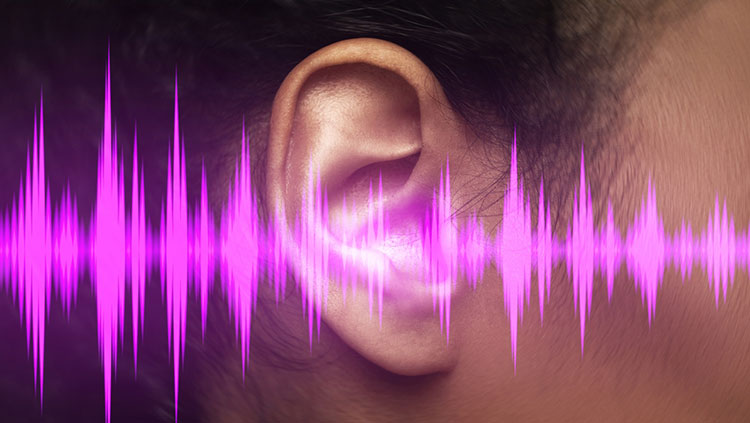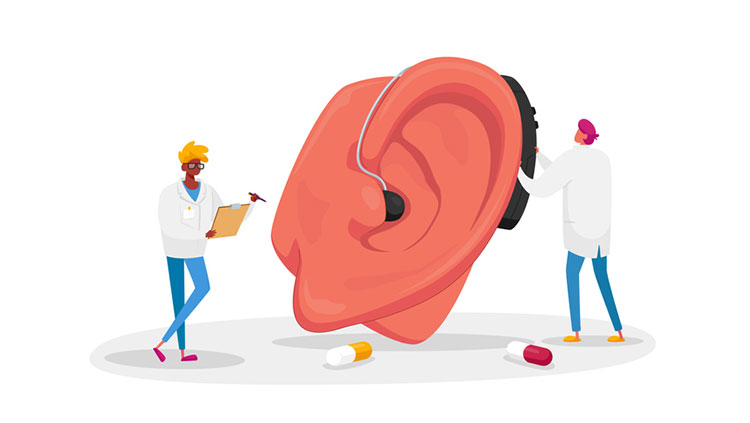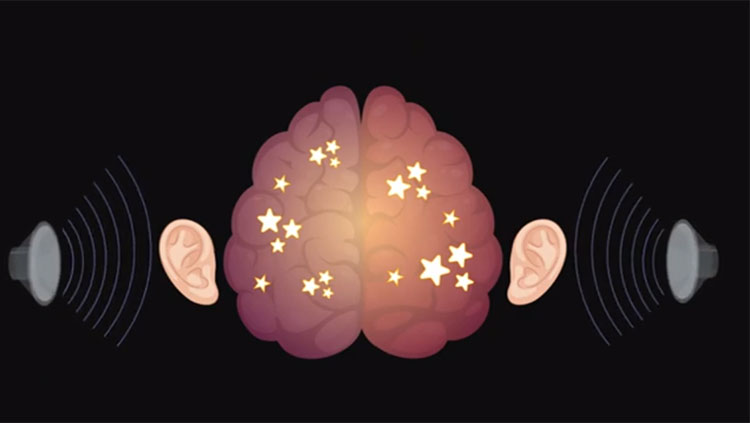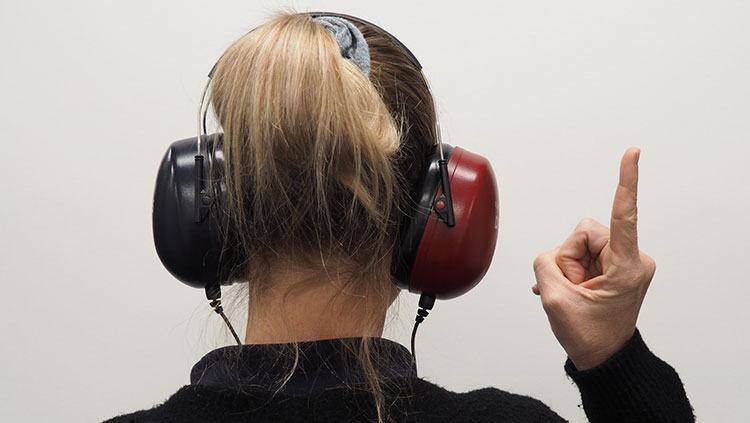Your Ears' Digitizers
- Published15 Feb 2018
- Reviewed15 Feb 2018
- Author Charlie Wood
- Source BrainFacts/SfN
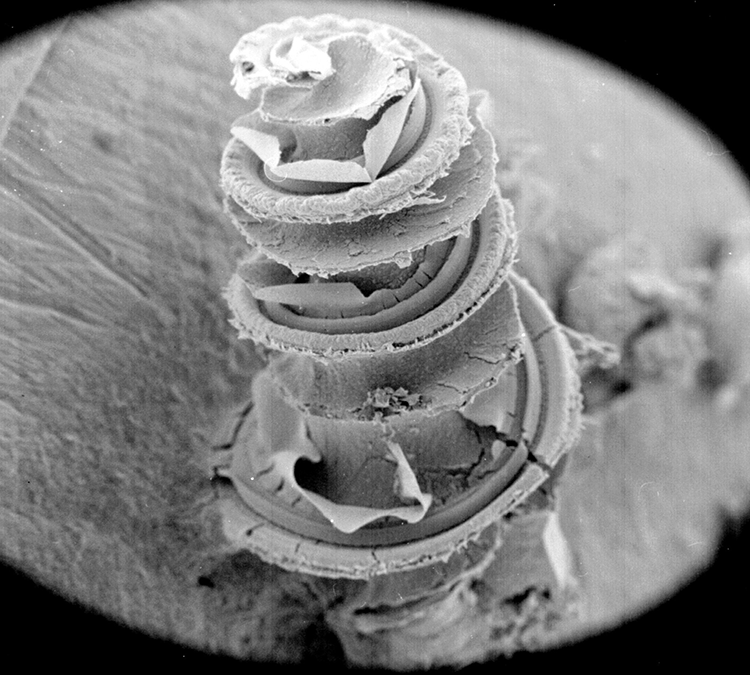
You have this tiny corkscrew to thank for every song you’ve ever heard.
When air vibrations beat the eardrum, a trio of bones transfers them to the liquid that fills the spiraling cochlea of the inner ear. It’s the Organ of Corti that takes these pulsating analog signal and converts it to electricity. The liquid’s movement shakes fibers inside, whose bending sets off action potentials that travel to the brain. There, analysis of their patterns calculates pitch and volume, so you can tell Symphony No. 5 from Let It Be.
These interior fibers – or “hair cells” – don’t grow back, so losing or damaging them makes hearing hard or impossible. In some cases, people can regain a type of auditory ability with a cochlear implant device, which skips the analog drum-bone-fluid-hair chain entirely. An external microphone digitizes sound, sending that electric signal through a wire that corkscrews through the cochlea and sends off action potentials directly. People relying on this device experience a different sort of hearing, and you can listen to a simulation below.
CONTENT PROVIDED BY
BrainFacts/SfN



